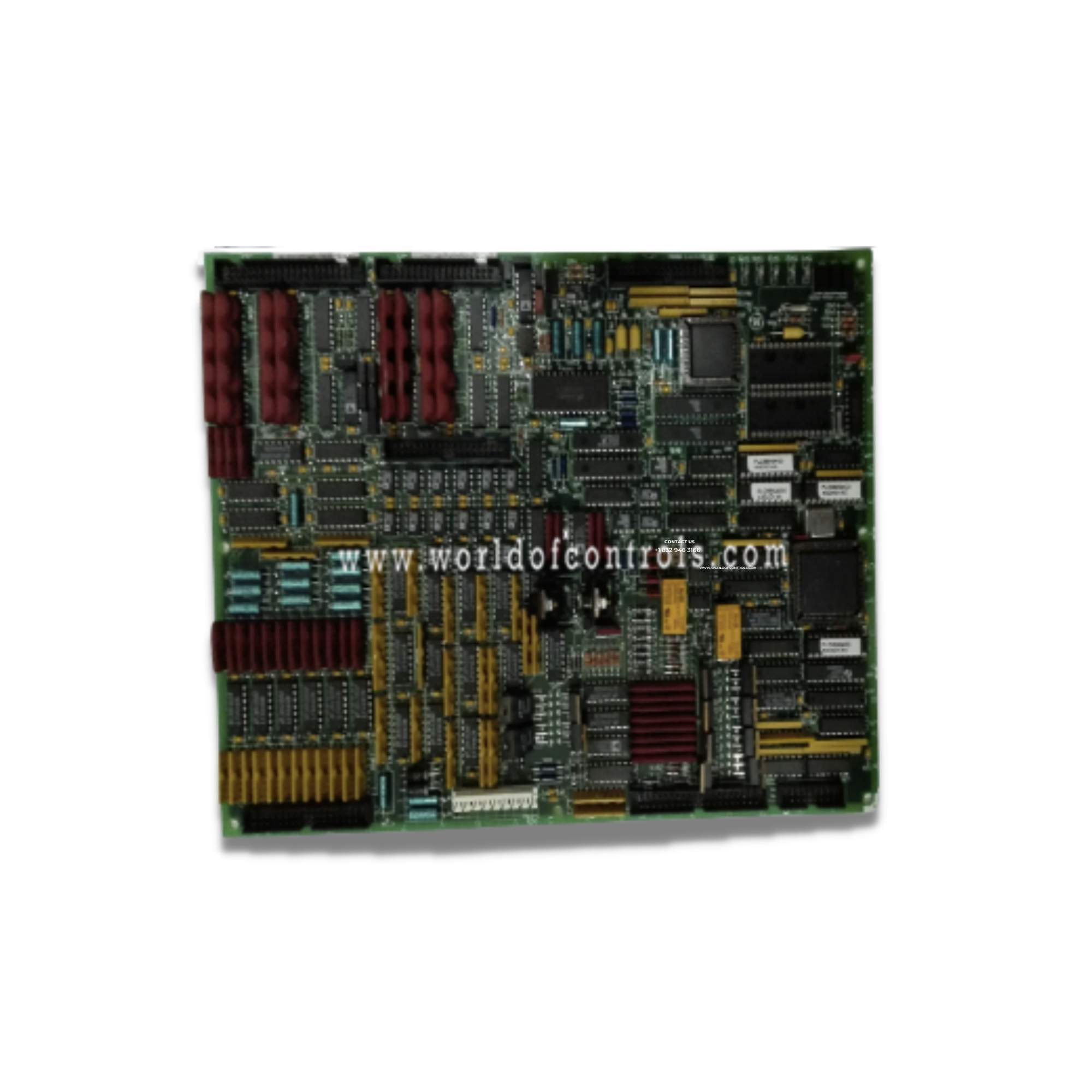
World Of Controls understands the criticality of your requirement and works towards reducing the lead time as much as possible.
DS200TCQAG1B - RST Analog I/O Board is available in stock which ships the same day.
DS200TCQAG1B - RST Analog I/O Board comes in UNUSED as well as REBUILT condition.
To avail our best deals for DS200TCQAG1B - RST Analog I/O Board, contact us and we will get back to you within 24 hours.
SPECIFICATIONS
Part Number: DS200TCQAG1B
Manufacturer: General Electric
Product Type: I/O Board
Series: Mark V
Country of Origin: USA
Availability: In Stock
DS200TCQAG1B is an RST Analog I/O Board manufactured by General Electric as part of the Mark V Series used in gas turbine control systems. Many of the analog signals read in by terminal boards mounted on the I/O cores R1, R2, and R3 are scaled and conditioned by the Analog IO Board (TCQA). The LVDT inputs, servo valve outputs, thermocouple inputs, 420 mA inputs and outputs, vibration inputs, relay driver outputs, pulse inputs, voltage inputs, and generator and line signals are just a few of the signals that are included in this list. Through the 3PL connector, some of the signals are written to the STCA board. The JE connector is used to transmit and receive generator and line signals with the TCQC board. The TCQA board scales and conditions 420 mA input signals like the compressor stall-detect signals and fuel flow pressure signals.
TCQA CONNECTORS ARE AS FOLLOWS
TCQA HARDWARE AND SOFTWARE CONFIGURATION
HARDWARE: The mA output circuits are selected using the hardware jumpers J1 and J2. The mA output current range, either 20 mA maximum or 200 mA maximum, is configured using J5 and J6. For card tests, the RS232 port is used in J7. J8 turns on an oscillator. For details on the hardware jumper settings for this board, consult Appendix A and the operator interface's hardware jumper panel.
SOFTWARE: Thermocouple, pulse rate, vibration, LVDT position, and 420 mA input and output I/O Configuration constants are entered in the I/O Configuration Editor found on the operator interface as explained below.
PULSE RATE INPUT CIRCUIT
The circuitry that adjusts and conditions the pulse rate inputs to read from the TCQC board through the JE connector is found on the TCQA board. These signals are brought into the QTBA and/or PTBA terminal boards from the TTL (transistor to transistor logic) and magnetic pickup inputs. The high-pressure shaft speed inputs are sent to the "R1" core. There are other signals that can be used with the pulse rate input circuits on R2 and R3.
TCQA 4-20 mA INPUT CIRCUITS
The circuitry for the 420 mA and 01 mA input signals is provided by the TCQA board. Through the JB connector, the signals are read from the TBQC terminal board. The voltage drop across the burden resistor, which is caused by the transducer's current drop, is measured by the TCQA board and written to the I/O Engine via the 3PL connector. The current range of the input signals is chosen using hardware jumpers on the TBQC terminal board.
TCQA 4-20 mA OUTPUT CIRCUITS
The circuitry for driving 420 mA outputs to the TBQC terminal board through the JB connector is provided by the TCQA board. Usually, these signals are utilized to power control equipment.
TCQA THERMOCOUPLE CIRCUIT
The TBQA terminal board is coupled to thermocouples. The thermocouple cold junction reference, which is used by TCQA to compute the cold junction compensation, is provided by circuits that are likewise housed on the TBQA terminal board. The actual temperature read by the thermocouple is determined by the TCQA board using the thermocouple input and compensation setting. The value is read by the I/O Engine using the 3PL connector. I/O configuration constants are used to select the types and curves of thermocouples.
WOC has the largest stock of Speedtronic Mark V control spares. We can repair your faulty boards. WORLD OF CONTROLS can also supply unused and rebuilt backed up with a warranty. Our team of experts is available round the clock to support your OEM needs. Our team of experts at WOC is happy to assist you with any of your automation requirements. For pricing and availability on any parts and repairs, kindly get in touch with our team by phone or email.
FREQUENTLY ASKED QUESTIONS
What is GE Mark V DS200TCQAG1B?
DS200TCQAG1B is an RST Analog I/O Board used in gas turbine control systems.
What is an analog I/O module?
The CPU can sense varying levels of voltage and current signals in the actual world with the use of analog input modules.
How to Check Price and Availability For Analog I/O Board?
Please Contact World of Controls FZE for sales at +1 609 385 1231 or Request a Quote.
WORLD OF CONTROLS warrants that from the date of delivery for a period of 36 months all UNUSED / REBUILT goods shall conform in all material respects with their description and any applicable specification.
WORLD OF CONTROLS warrants that from the point of delivery all Repairs will accord with their description and/or remain functional subject to the performance of the Repair Item for a period of 24 months.